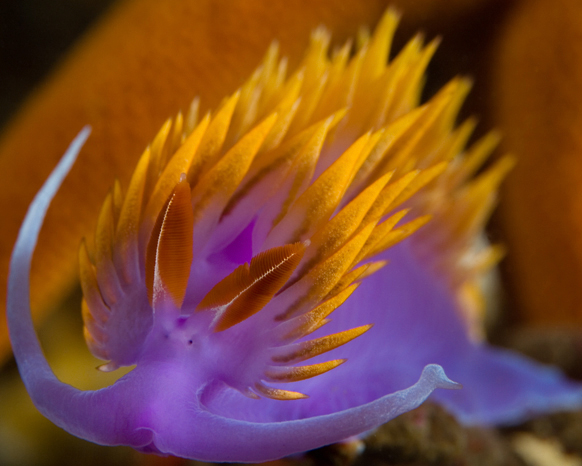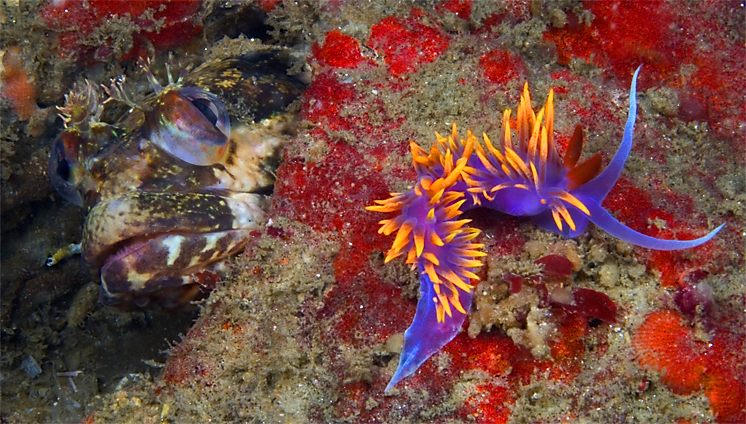Two photos by Kawika Chetron
of "Spanish shawls" -

Chetron's comment -
The vibrant colors of a Spanish shawl (Flabellina iodinea) provide
photographers with great raw material. Of course, there's always a catch: These inch-long slugs flap violently in the surge like one of those cat toys made from rubber bands on the end of a stick. As such, getting the rhinophores in focus is often an exercise in frustration. Even a really good macro lens has difficulty autofocusing on this type of subject. This shot was taken using a fixed focus and fine movements of the photographer's hand to achieve focus by moving the entire camera forward and backwards. The blurry orange arms are those of a blood
star (Henricia leviuscula).
"Shale Island", Monterey Bay, California
February 17, 2007
and,

his commentary -
This spanish shawl (Flabellina iodinea) appears to be in danger of
becoming a colorful snack for a onespot fringehead (Neoclinus
uninotatus). Thankfully for the shawl, its wild coloration is indicative of
it's ability to sting potential predators. Spanish shawls rove the reef in
search of the hydroids upon which they feed. Interestingly enough, a shawl's stinging ability comes from special cells called nematocysts which are captured from prey and passed through the digestive system without being discharged. It's possible that this fringehead wasn't interested in the passing slug because it was familiar with its defense mechanism. However, I suspect that it's more likely the fish was entirely unaware of its visitor. Fringeheads, apparently, have poor eyesight. I've seen them out hunting -- they're quite prone to mistaking rocks for prey.
"Anchor Farm", Monterey Bay, California
December 4, 2004
These are from his website -
http://www.coldwaterimages.com
Story of the photographer's recent death while on photo trip here -
http://www.able2know.com/forums/viewtopic.php?t=93954
(I still feel thrown by the death of such a young and talented person.)